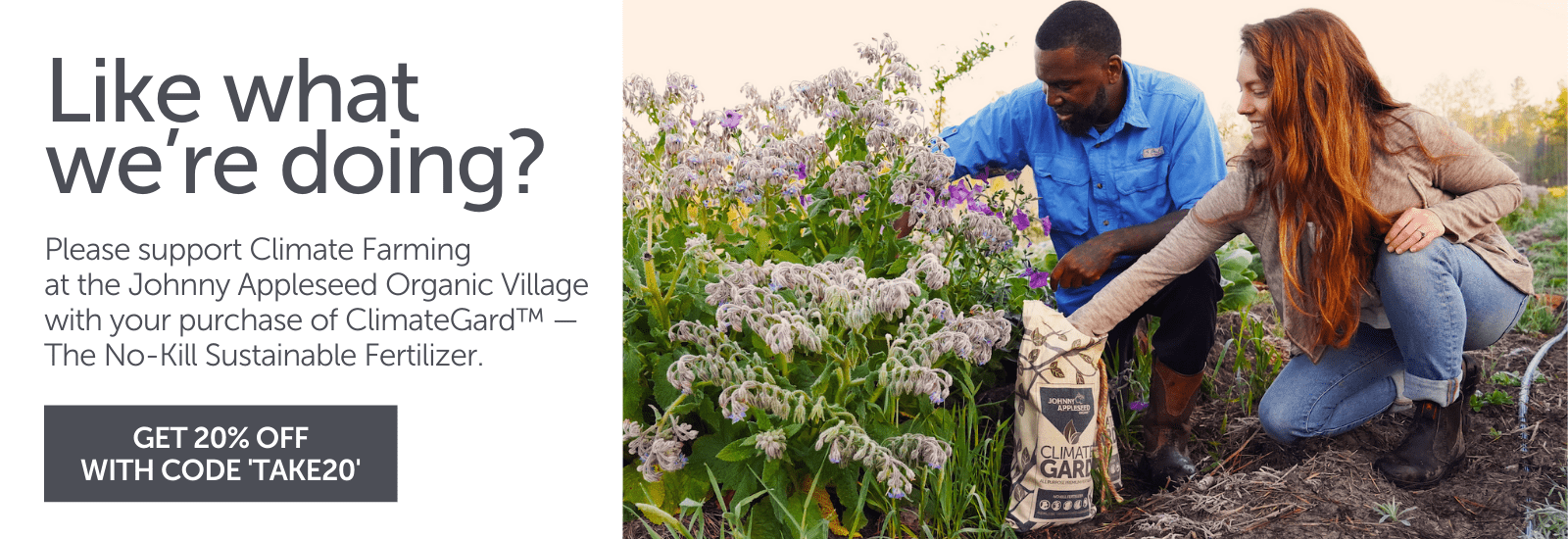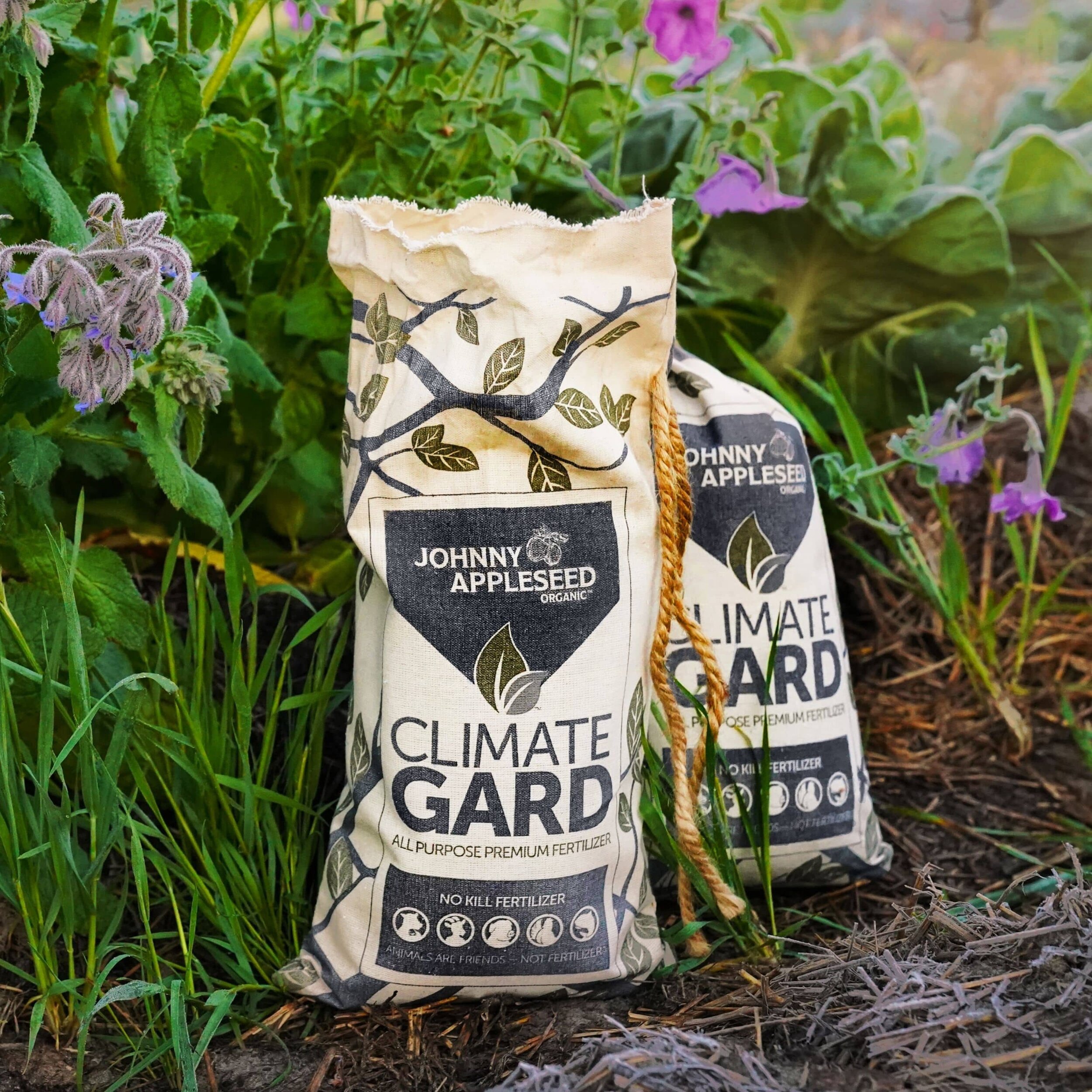Climate Farming: Integrating Livestock into the Garden
By Charles Goodin
Incorporating animals into your farm or garden can seem like a daunting task. After all, they’re living creatures with any number of species-specific needs and care requirements — depending on which animals you choose, you’ll need to ensure they’re fed, give them access to clean drinking water, protect them from predators and possibly even house them.
If it all seems like too much, don’t worry. By selecting the correct species in numbers appropriate for the scale of your farm or garden, you can eliminate much of the guesswork. In this post, we’ll tell you exactly how to do that, and share some tips and tricks we’ve learned by caring for animals at the Johnny Appleseed Organic Village.
But before we get into all that, let’s answer the question you’re probably already wondering: Why would anyone do this?
Why Raise Livestock?
The simple answer is that animals set the stage for and bolster the effects of many of the other principles of Climate Farming™. A properly managed flock of chickens, for example, is basically a fleet of miniature tillers, as their feet gently break up and aerate the soil in ways that will help you reduce or eliminate mechanized tillage. Meanwhile, they’ll be eating weeds and pests — and digesting them into fertilization material for your garden. Other animals, like pigs, can be incredible land managers and have restorative effects on soil in a rotational grazing system.
In other words, a well-managed group of animals can be a low-cost, low-impact, natural way to accomplish much of what’s often done using methods that are expensive, environmentally harmful and reliant on potentially damaging chemicals like pesticides and synthetic fertilizers.
Now that you know the ‘why,’ let’s talk about the ‘how.’
How to Select Farm Animals
First, you’ll need to select the right species for the goal you’re attempting to achieve. Here are some of the common species used in Climate Farming™ and the roles for which they’re best suited:
Pigs — A great option for large-scale cell grazing, pigs are excellent land managers and healers. Their manure’s 8:1 average carbon to nitrogen ratio makes it ideal for pasture regeneration.
Poultry — The ubiquitous workhorse of the established farm or garden, free range chickens are great for fertilization, tilling, aerating and pest control. Ducks, turkeys and other birds can also be used in appropriate climates. The 5:1 average carbon to nitrogen ratio of poultry manure makes it useful for pasture regeneration or deep litter composting.
Ruminants — Cows, water buffalo, goats and sheep are all variously applicable for larger-scale farms where a heavier touch is needed. The average carbon to nitrogen ratio for the manure of most ruminants is around 14:1, which combined with its high harvestability, makes it great for composting.
You’ve probably noticed that the word ‘scale’ appears in many of these descriptions, and that isn’t an accident. The size of your farm or garden has major implications for what species you can accommodate, and how many of them. For more on how to calculate the amount of acreage needed per animal, check out this whitepaper from the Natural Resource Conservation Service.
Once you know how many of which species you want to bring into your farm or garden, the next step is to select breeds appropriate for the tasks you’ll be assigning them. As with most things, finding a local source of an heirloom breed is usually best, but depending on where you’re located, that may not be an option.
In that case, the best alternative is usually to order your animals online. One benefit of this method is that it gives you unlimited access to the entire diverse range of each species, some of which are more useful than others in an agricultural context. Here are some of the breeds we recommend checking out:
Pigs — Kunekune, Meishan, Duroc
Poultry — Calico princess, Leghorns, Australorps, Muscovy ducks
Ruminants — Brahma, Hereford, Zebu, Dwarf Nigerian goats
You’ll also need to decide whether you want to purchase mature animals or raise them yourself — a choice that ultimately comes down to personal preference.
Sheltering Your Animals
Once you’ve ordered your animals, you should begin preparing to receive them. Think about what they’ll need to be safe and comfortable, as well as what accessories will be necessary for integrating them into your farm or garden.
Here are the minimum accommodations we recommend for each species:
Pigs — Shelter with a roof that provides shade
Poultry — A coop that allows for at least 2 square feet per bird.
Ruminants — High-latitude farms will require structures for wintering the animals, while lower-latitude farms should consider shade structures if the farm lacks adequate tree coverage.
Conclusion
Ensuring everything your animals need is in place on the day they arrive will make integrating them into your growing operation exponentially easier. Once your animals are situated and happy, all that’s left to do is care for them, enjoy their company and reap the benefits of their free labor!
Subscribe to Newsletter
Follow Us on Social
Cutting-edge microbiology
No kill formula
Superior plant nutrition derived from the most ethical, sustainable sources available.
Produces the same results as conventional fertilizers without the negative environmental impacts.
Each ClimateGard pellet is infused with micronutrients, silicon, humic acid and a high-performance blend of living bacteria and fungi.
Delivered in an environmentally friendly organic cotton bag with a compostable inner liner.
Will continue to enrich your soil long after application.
$39.95 for 7.5 pound bag | $69.95 for 15 pound bag.



